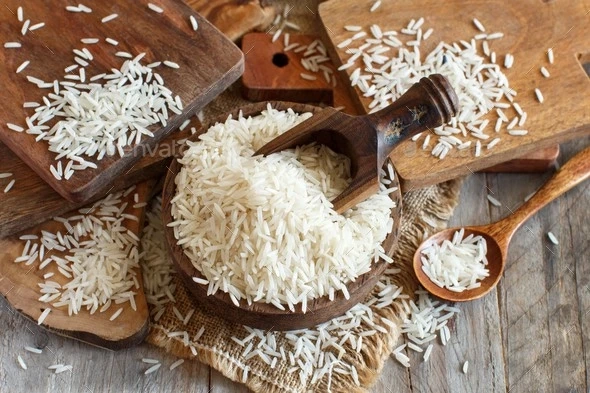Basmati rice, renowned for its distinct aroma, long grains, and exquisite taste, is a staple in many households and a favorite in culinary traditions worldwide. India\'s prominence in the production and export of basmati rice cannot be overstated, with the country leading the global market. This article delves into the Basmati rice exports in India, exploring the factors contributing to its success, the challenges faced, and the future prospects.
Historical Background of Basmati Rice in India
India\'s relationship with basmati rice dates back centuries. Historically cultivated in the Indian subcontinent, particularly in the regions of Punjab, Haryana, Himachal Pradesh, Delhi, Uttarakhand, and Western Uttar Pradesh, basmati rice has been an integral part of India\'s agricultural and cultural heritage. The word \'Basmati\' itself means \'fragrant\' or \'aromatic\' in Sanskrit, reflecting the rice\'s distinctive characteristics.
Geographical Indication and Quality Standards
One of the key aspects that sets Indian basmati rice apart is its Geographical Indication (GI) status. This status ensures that the rice labeled as \'basmati\' is produced in specific regions of India, guaranteeing its authenticity and quality. The All India Rice Exporters Association (AIREA) plays a crucial role in maintaining these quality standards, ensuring that Indian basmati rice remains a preferred choice globally.
Export Markets and Economic Impact
India is the largest exporter of basmati rice, catering to over 90 countries. The primary markets include the Middle East, the European Union, and the United States. The Middle East, particularly Iran and Saudi Arabia, constitutes a significant portion of India\'s basmati rice exports. In the fiscal year 2022-2023, India exported approximately 4.5 million metric tons of basmati rice, generating over $4 billion in revenue.
Factors Contributing to the Success of Basmati Rice Exports
Several factors have contributed to the booming basmati rice exports in India:
- Quality and Variety: Indian basmati rice is known for its superior quality, long grains, and aromatic properties. Varieties such as Pusa Basmati 1121, Traditional Basmati, and Pusa Basmati 1509 are highly sought after in international markets.
- Government Support: The Indian government has implemented various policies to support basmati rice exports. These include providing export incentives, facilitating infrastructure development, and ensuring compliance with international quality standards.
- Technological Advancements: Advances in agricultural practices, such as the use of high-yielding varieties and improved pest management techniques, have significantly boosted production levels.
- Brand Building and Marketing: Indian exporters have invested heavily in brand building and marketing strategies to promote basmati rice in international markets. Participation in global trade fairs and exhibitions has also helped in creating a strong brand image.
Challenges Faced by the Basmati Rice Export Industry
Despite the success, the basmati rice export industry in India faces several challenges:
- Price Volatility: Fluctuations in global demand and supply can lead to price volatility, affecting the profitability of exporters.
- Trade Barriers: Non-tariff barriers, such as stringent quality standards and import regulations imposed by importing countries, can pose significant challenges.
- Competition: India faces stiff competition from other basmati rice-producing countries like Pakistan. Maintaining a competitive edge requires continuous improvement in quality and marketing strategies.
- Environmental Concerns: The cultivation of basmati rice is water-intensive, raising concerns about sustainability and environmental impact. Efforts are needed to adopt more sustainable farming practices.
Future Prospects of Basmati Rice Exports
The future of basmati rice exports in India looks promising, with several initiatives underway to address existing challenges and tap into new markets. Some of the key areas of focus include:
- Sustainable Farming Practices: Emphasis on sustainable farming practices, such as the System of Rice Intensification (SRI) and precision agriculture, can help in reducing the environmental impact while ensuring higher yields.
- Exploring New Markets: Diversifying export markets beyond the traditional ones can mitigate risks associated with market dependence. Efforts are being made to explore markets in Africa, Southeast Asia, and Latin America.
- Value Addition: Investing in value-added products, such as ready-to-cook basmati rice meals and organic basmati rice, can open up new avenues for growth.
- Research and Development: Continuous research and development in developing new basmati rice varieties that are resistant to pests and diseases, as well as those that require less water, can ensure the long-term sustainability of basmati rice cultivation.
Conclusion
India\'s dominance in the global basmati rice market is a testament to the country\'s rich agricultural heritage and the relentless efforts of farmers, exporters, and policymakers. By addressing the challenges and leveraging the opportunities, India can further strengthen its position in the international market. The journey of basmati rice exports in India is one of resilience, innovation, and commitment to quality, ensuring that this aromatic rice continues to grace dining tables around the world.



